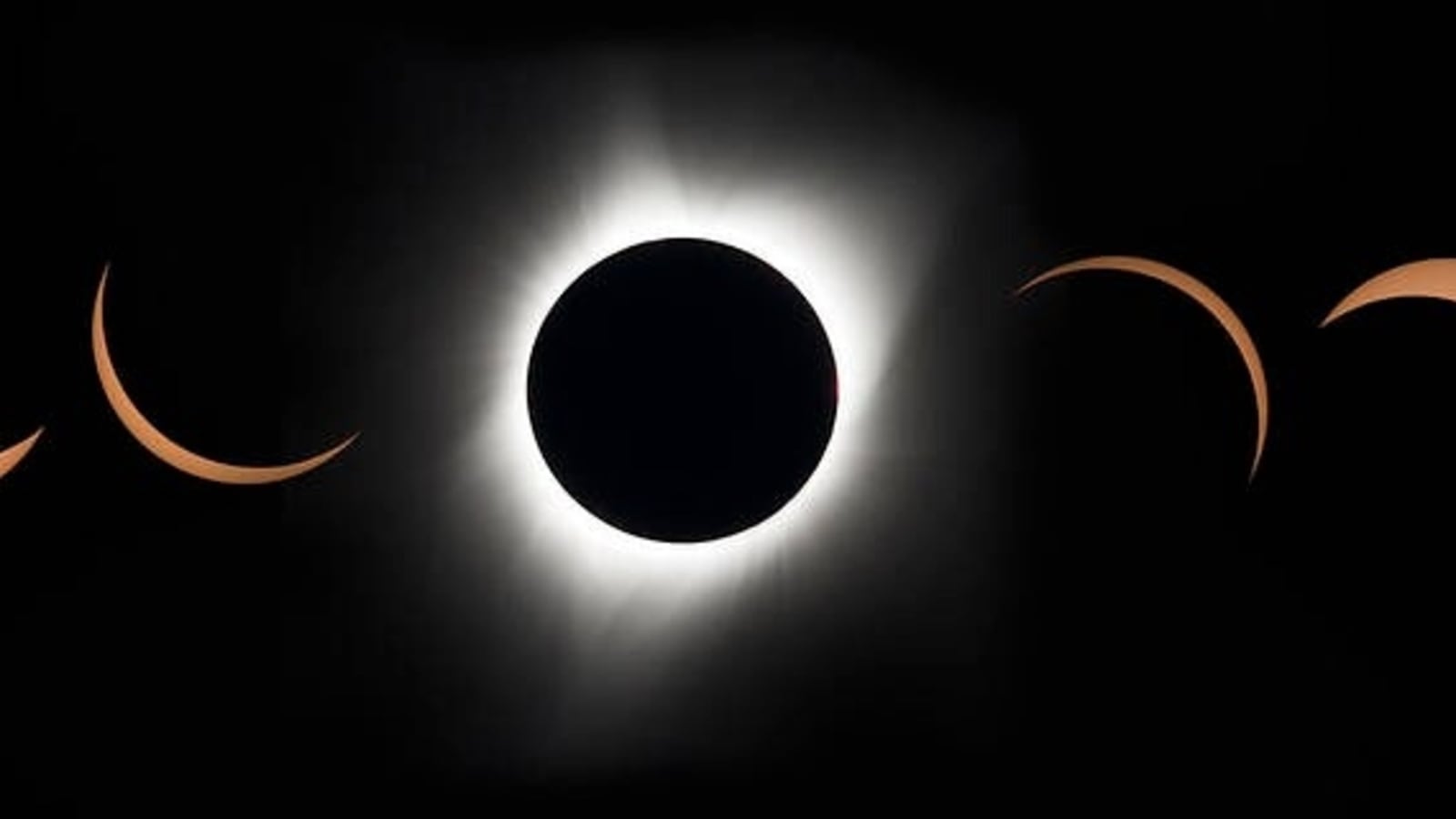A Solar eclipse is one of the most awe-inspiring events and people love to watch it. However, not all the eclipses are visible all over the globe. Now, NASA, has released a map citing details of 2023 and 2024 solar eclipses in the United States.
It can be known that the year 2023 will witness an annular solar eclipse on October 14, while a total solar eclipse will take place on April 8, 2024. "Based on observations from several NASA missions, the map details the path of the Moon's shadow as it crosses the contiguous US during the annular solar eclipse on October 14, 2023, and total solar eclipse on April 8, 2024," NASA stated in a report . Explaining the map, NASA further informed that the dark paths across the continent show where observers will see the 'ring of fire' when the Moon blocks all but the outer edge of the Sun during the annular eclipse, and the ghostly-white outer atmosphere of the Sun (the corona) when the Moon completely blocks the Sun's disk during the total eclipse.
Outside those paths, the map also shows where and how much the Sun will be partially eclipsed by the Moon. On both dates, all 48 contiguous states in the U. S.
will experience at least a partial solar eclipse (as will Mexico and most of Canada). How to read the Map On NASA's new eclipse map, the paths for the annular eclipse and total eclipse appear as dark bands across the US . "Anyone located in the annular eclipse path, from Oregon to Texas, will have a chance to see the annular eclipse if the skies are clear.
Anyone located in the total eclipse path, from Texas to Maine, will have a chance to see the total eclipse, weather permitting," NASA informed. Inside those dark paths are oval shapes with times inside them (yellow ovals for the annular eclipse, purple ovals for the total eclipse). Those ovals show the shape of the Moon's shadow cast on Earth's surface at the times shown.
People in the areas inside the ovals will see the annular eclipse or total eclipse at that time. Share Via How to read the map. (NASA) How to read the map.
(NASA) For locations close to the center of the paths, the annular eclipse or total eclipse will last longer than those near the outer edges of the path. Inside each path are white lines that indicate how long annularity or totality will last. For the annular eclipse path, you can find labels (ranging from 3 to 4.
5 minutes) near the Nevada-Utah border in the north and between San Antonio and Corpus Christi, Texas, in the south. For the total eclipse path, you can find labels near Presque Isle, Maine, in the north, and between the 2:20 and 2:25 p. m.
CST ovals in Mexico in the south. Viewers in locations outside the paths will not experience a total solar eclipse or annular eclipse, but they may still see a partial eclipse. Lines running parallel to each path indicate how much of the Sun will become covered by the Moon during the partial eclipse.
For the annular eclipse, these lines appear faint yellow. For the total eclipse, they're faint purple. Neither eclipse will be contained to the contiguous U.
S. , though. In the lower right corner of the NASA map, a globe shows the full paths for both eclipses.
The annular eclipse (in yellow and black) extends into Mexico, Central America, and South America. The total eclipse (in purple and black) also crosses Mexico and northeastern Canada. Shaded bands (yellow for the annular eclipse and purple for the total eclipse) also show where a partial eclipse can be seen.
For example, in October 2023, southeastern Alaska will experience a partial eclipse, while Hawaii will have a chance to see a partial eclipse in April 2024. .

